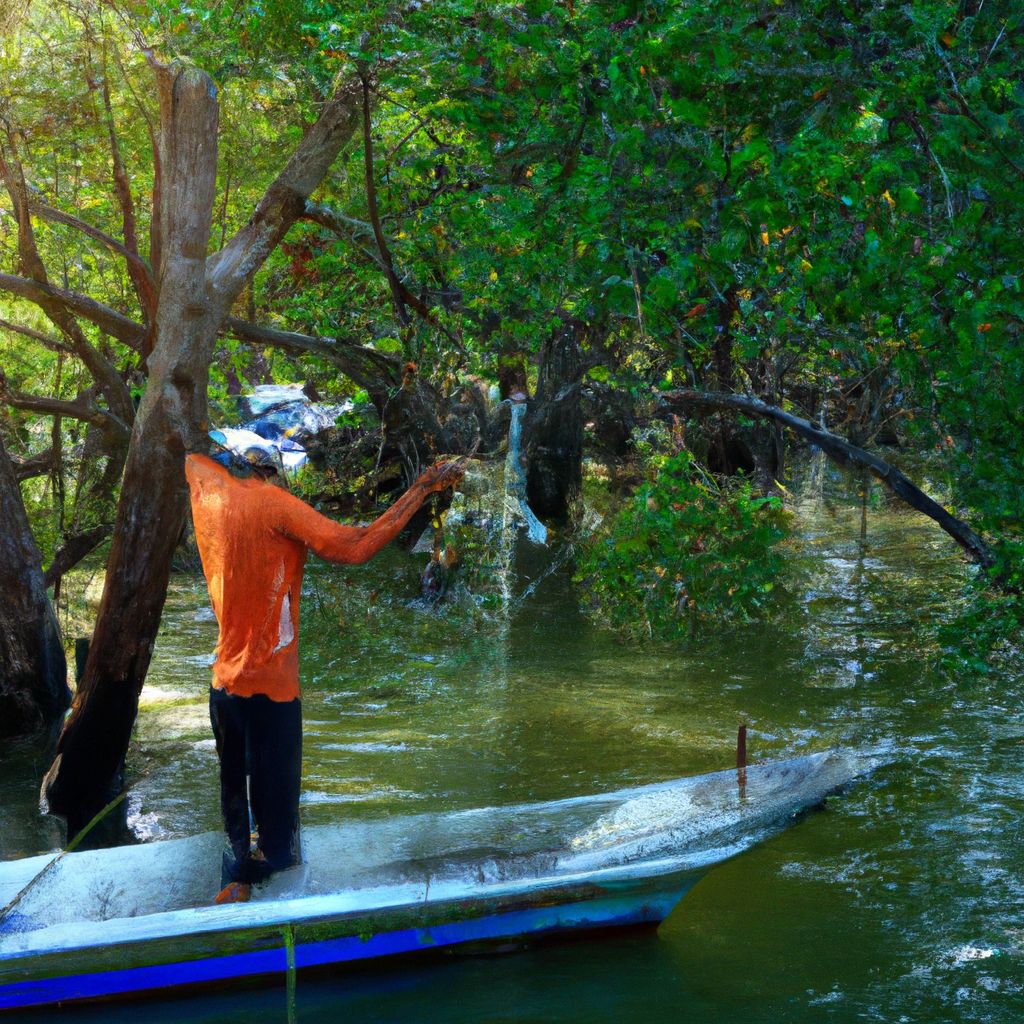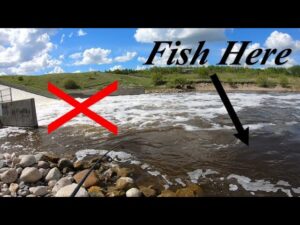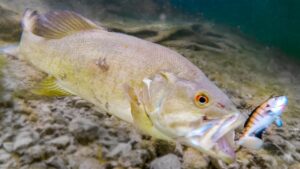To catch fish in shallow waters, strategic approaches are key. Knowing the species of fish that inhabit these areas is the first step. Time of day, weather conditions, and wind direction can shape fish behavior.
Topwater lures and bait can be effective for enticing fish to the surface. Stealth and caution are important when approaching these areas. Noise and disturbances can spook fish and decrease your chances of success.
Finding the perfect spot for fishing in shallow waters is like playing hide-and-seek with a magician – it’s not easy!
Understanding the Environment
To better understand the environment of shallow waters and increase your chances of catching fish, dive into the sub-sections that detail the characteristics of these waters. Delve into the unique qualities that define shallow waters, gaining insights that will help you strategize your fishing approach effectively.
Characteristics of Shallow Waters
Shallow waters have distinct features that differ from the deep ocean. These features create a special environment. We’ll look at three main points:
- Firstly, shallow waters usually have a depth of less than 200m. Sunlight can reach the seabed here, so photosynthesis happens and lots of marine life lives there.
- Secondly, shallow waters tend to be warmer than deeper areas. The heat from the sun is more intense, and so affects where different marine ecosystems live.
- Thirdly, shallow waters often show bright colors because of coral reefs and other colorful creatures. These creatures thrive in the nutrient-rich environment and make a beautiful underwater scene.
Plus, shallow waters provide hiding spots and nursery grounds for many species of fish and other marine organisms. They’re sheltered from predators and the perfect spot for breeding and raising young.
It’s amazing that over 90% of marine species rely on coral reefs at some point in their life cycles. Reefs not only provide essential living spaces, but also act as natural barriers against storms and erosion. NOAA’s study found that coral reefs protect 200 million people worldwide from storm surges and other coastal risks.
Fishing Techniques for Shallow Waters
To effectively catch fish in shallow waters, utilize strategic fishing techniques. Enhance your success with bait selection, masterful lure techniques, and the art of fly fishing. Each sub-section in this section offers unique solutions to help you optimize your fishing experience in shallows.
Bait Selection
Professional anglers know the importance of bait selection for a successful fishing trip. They consider factors like water conditions, target species, and the season when selecting bait. The right bait can help anglers increase their chances of catching a big one!
Popular bait options used in shallow waters:
- Live Bait – Fish, worms, and insects. Mimics natural food source.
- Artificial Lures – Plastic, metal, or wood. Examples include crankbaits, jigs, and spinnerbaits.
- Soft Plastic Bait – Shapes and scents to attract fish. Plastic worms, creature baits, and swimbaits.
- Fly Fishing Flies – Imitates insects or small aquatic creatures.
Color and action of the bait are major factors to consider when choosing. Even historical records show early civilizations used unconventional items like feathers, fur, and cloth for fishing. Innovative bait options have been developed over time.
Selecting the right bait is an art. Mastering it ensures anglers have the right arsenal for different conditions and species. Every fishing experience is a chance to experiment and discover new things. So, don’t forget to be flashy and patient – you might just get the biggest catch yet!
Lure Techniques
Text: Fly fishing tactics – the only way to hook a fish better than Tinder! Brightly coloured lures, varying retrieval speed and depth, and mastering techniques such as Topwater Fishing, Jigging and Twitching will help you improve your lure game. Remember, practice makes perfect. Pro Tip: Keep an eye on small fish in the area. Larger predators often follow them, so imitate their movements with your lure for success!
Fly Fishing Tactics
Fly fishing involves using artificial flies to catch fish. It is an art form that needs skill and finesse. Here’s what to remember when using fly fishing tactics:
- Use lightweight equipment. Small reels and light line for shallow waters. This enables precise casts and presentations.
- Perfect the presentation. Mimic the movements of prey, like insects, to attract fish.
- Select the right fly. Consider the type of fish, conditions, and insect activity in the area. Matching the hatch helps catch more fish.
- Be patient and observant. Take your time, watch the water for signs of feeding fish. Adapt to changes in current or wind.
Successful fly fishing in shallow waters requires knowing the unique challenges of each body of water. Throughout history, fly fishing has gone from a means of survival to a beloved pastime. Ancient civilizations like the Egyptians and Romans used it to catch food. European nobility during medieval times made it a popular sport. Today, anglers worldwide keep up its traditions and techniques. Gear up with the right tools for shallow water fishing. A fish isn’t caught wearing ill-fitting accessories!
Equipment for Shallow Water Fishing
To ensure your success in shallow water fishing, equip yourself with the right tools. Discover the essential gear for this type of fishing: rods and reels, lines and leaders, and nets and gaffs. Each of these sub-sections offers unique solutions to optimize your fishing experience in shallow waters.
Rods and Reels
Rods and reels are essentials for shallow water fishing! They control casting and retrieving the bait. Let’s take a look at the different types.
Spinning rods offer versatility and flexibility. Baitcasting rods provide better accuracy. Fly rods are great for fly fishing.
It’s important to match the rod and reel type for optimal performance. Material, length, action, power range, gear ratio, and bearing count all influence selection.
Also consider weather, time of day and local knowledge about fish behavior. That way, you can increase your chances of catching those impressive catches.
Don’t forget to equip yourself with the right rods and reels next time you head out! Ensure your fishing experience is optimal and memorable. Happy fishing!
Lines and Leaders
Nets and gaffs are the ultimate tools for shallow water fishing. For successful fishing, it is essential to choose the right lines and leaders. Monofilament, braided, and fluorocarbon lines each have their own strengths and best uses. Plus, using the correct knots and knowing the target species can improve your chances of catching a trophy. So, stay well-equipped and happy fishing!
Nets and Gaffs
Nets and gaffs have special features and applications. Nets are good for catching smaller fish, like trout or panfish. They have a mesh structure so water can pass through, but the fish can’t escape. Gaffs are long poles with sharp hooks on one end. They’re used to hoist larger fish, such as marlin or tuna, out of the water.
Nets come in various sizes and materials. Anglers can choose between landing nets, dip nets, or cast nets. Gaffs are usually made from strong materials like stainless steel or aluminum. That way they can handle bigger game fish.
When you go fishing, make sure you have quality nets and gaffs. They’ll help you tackle any challenge. Don’t forget: investing in the right equipment is key to having a great fishing experience. So get your nets and gaffs today! Now, go and have a safe and successful fishing trip!
Safety Precautions for Shallow Water Fishing
To ensure your safety while fishing in shallow waters, employ different safety precautions. Be aware of potential hazards, choose appropriate footwear, and consider the use of flotation devices. These measures will help you navigate the challenges of shallow water fishing and protect yourself from potential risks.
Awareness of Hazards
Shallow water fishing is a popular pastime, but it’s important to be aware of the potential hazards.
Hidden obstacles like rocks and tree stumps are a danger, and can cause serious accidents. So, anglers should be cautious and familiarize themselves with the fishing area to reduce risk.
Adverse weather conditions can also affect safety. If the wind suddenly picks up, or there’s a thunderstorm, it can create hazardous waters and decreased visibility. Fishers should check the weather before heading out.
Marine life can be a hazard, too. Wear protective clothing and footwear to minimize the risk of touching a stingray or jellyfish.
Be mindful of your own physical capabilities. Slippery algae-covered surfaces or uneven terrains can lead to slips and falls. So, remain aware of your surroundings and keep your balance.
It’s also important to remember that the US Coast Guard reports that 72% of boating accident deaths involve drowning, and 80% of victims weren’t wearing a life jacket.
By understanding the hazards associated with shallow water fishing, anglers can take proactive measures to ensure their safety. Keeping these safety tips in mind will make the experience more enjoyable and worry-free.
Proper Footwear
When it comes to shallow water fishing, wearing the right kind of footwear is key. Not only for safety, but for an enjoyable experience. Here are some important points to consider:
- Non-slip soles: To avoid slips or falls, pick shoes with non-slip soles, especially when walking on wet rocks or slippery surfaces.
- Closed-toe design: Choose shoes or boots that completely cover your toes, to protect feet from sharp objects like rocks, shells, or even fish hooks in the water.
- Quick-drying material: Select shoes made from quick-drying materials like neoprene or mesh, as they allow water to easily drain out and keep feet comfortable.
- Ankle support: Look for shoes that provide ankle support to prevent sprains or injuries while navigating uneven terrains.
In addition, choosing the right size is just as important. Ill-fitting shoes can be uncomfortable and hinder mobility on the fishing trip.
I know firsthand the importance of proper footwear. During my own shallow water fishing adventure, I slipped and fell into the water due to worn-out soles. Thankfully, no injuries occurred, but it was a reminder of how crucial it is to wear suitable shoes.
Investing in footwear that provides grip, protection, and comfort is the way to ensure a safe and fun shallow water fishing experience. And don’t forget, if you don’t like swimming, a floatation device is the perfect solution!
Floatation Devices
Steps for choosing and using a Floatation Device:
- Choose a Floatation Device that fits your body size and weight.
- Make sure it is made of durable materials and is approved by safety authorities.
- Wear it properly, with all straps firmly attached.
- Inflate manual or automatic inflatable Floatation Devices as per the manufacturer’s instructions.
- Regularly inspect and maintain your Floatation Device for effectiveness.
Also, opt for Floatation Devices in bright colors to make them easily visible in an emergency. Ensure that the device does not restrict your movement or casting abilities. Invest in your safety by getting a Floatation Device and share the message with others. Enjoy fishing safely in shallow waters, and remember to practice conservation. Fish deserve a break too!
Conservation Practices in Shallow Waters
To be more environmentally conscious while fishing in shallow waters, employ conservation practices. With the use of catch and release techniques, protecting the habitat, and practicing responsible fishing, you can reduce the impact on the ecosystem. These strategies ensure sustainable fishing practices and preserve the delicate balance of shallow water ecosystems.
Catch and Release Techniques
Barbless hooks should be used to reduce injury to fish. Handle them with wet hands or a soft cloth to protect their skin and scales. Gently release them back into the water, so they can regain their strength.
Some species require special techniques for release. Like, larger fish need to be moved in the water to stimulate oxygen flow through their gills.
A pro tip: Quickly take a photo of the fish, but don’t keep it out of water for too long. Conservation in shallow waters is a collaboration between fish and environmentalists that shows going with the flow isn’t always bad.
Protection of Habitat
For shallow water habitat protection, conservation measures are necessary. These include:
- Establishing marine protected areas
- Strict fishing/pollution regulations
- Habitat restoration, including seagrass planting, artificial reef creation, and invasive species removal
- Water quality maintenance, with measures to reduce pollution
To gain local support, stakeholders need to be informed about the importance of habitat protection.
The habitats provide many services, such as:
- Water filtration
- Carbon sequestration
- Storm protection
- Nursery grounds for commercially valuable fish species
Seagrasses in shallow waters have a tremendous carbon storage potential, which is 35 times faster than tropical rainforests. Therefore, protecting shallow water habitats is important for their ecological value and for mitigating climate change.
Ultimately, adequate habitat protection in shallow waters is essential to maintain ecosystems and achieve sustainability. Everyone must take action individually and collectively for long-term habitat security.
Responsible Fishing Practices
Responsible fishing is key to preserving marine life and keeping fish stocks sustainable. By using responsible practices, we can reduce the environmental impact and ensure fisheries can stay alive.
Let’s explore some of the main practices:
- Selective Fishing: Target specific species and sizes to minimize bycatch and not hurt non-targeted species.
- Gear Modifications: Use gear like escape panels, turtle excluder devices, and circle hooks to avoid accidental captures.
- Seasonal Closures: Close fishing areas during important times such as spawning to protect populations.
- Quota Systems: Put catch limits in place to prevent overfishing and keep populations healthy.
- Habitat Protection: Protect habitats like coral reefs, seagrass beds, and mangroves from destructive fishing.
Other factors like proper disposal of waste, monitoring by authorities, and public education also contribute to responsible fishing. The urgency is clear – a study by the FAO showed that 33% of global fish stocks are overfished.
It’s time for us to come together and do our part to make sure our oceans stay healthy and we can enjoy them responsibly. So don’t be shallow – dive deep into conservation!
Conclusion
Catching fish in shallow waters needs careful planning. By using the right strategies, anglers can improve their chances of catching fish. Here’s a conclusion!
It’s important for fishermen to be aware of environmental factors like tides, water temperature and wind direction when fishing in shallow waters. These can tell you where fish are likely to be. If you understand and adapt, your chances of success are greater.
A useful tip: Keep quiet when fishing in shallow waters. Noise is amplified in these areas so silence is important. You can do this by using silent casting techniques or by being mindful of sudden movements.
Let me share a story. Last summer, an experienced fisherman called John went to a shallow creek known for its trout. He saw that the shallowness made the trout cautious. John used stealthy wading techniques and cast his flies with care. He used lifelike imitations and was quiet. He had a successful day and caught several impressive trout! This shows that strategic approaches can lead to great rewards when fishing in shallow waters.





